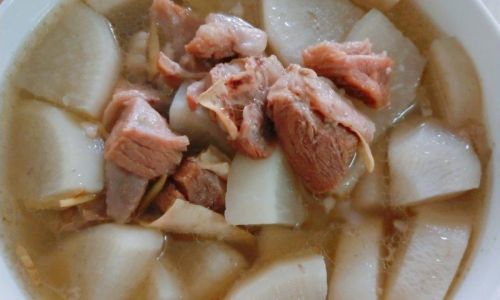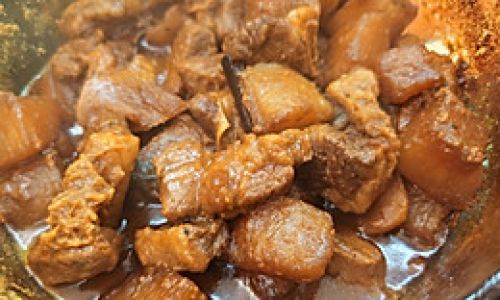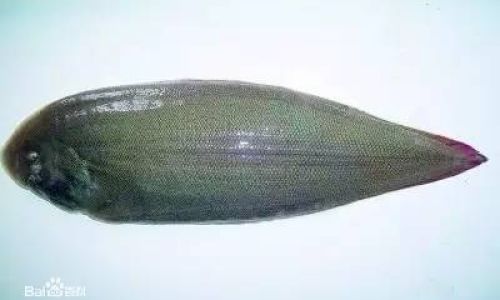Jackfruit, a tropical giant known for its distinctive aroma, sweet flavor, and meaty texture, is a beloved fruit across Southeast Asia, India, and beyond. However, handling jackfruit can be intimidating due to its size, sticky latex, and thick, spiky rind. Many people opt for pre-peeled or pre-cut jackfruit for convenience, only to realize the segments (or “bulbs”) are underripe and firm. Ripening peeled jackfruit requires a strategic approach, as the fruit lacks its protective outer layer, which naturally aids in the ripening process. This article explores science-backed methods, practical tips, and creative solutions to transform firm, unripe jackfruit into a soft, aromatic delight.

Understanding Jackfruit Ripening: The Science Behind the Sweetness
Before diving into techniques, it’s essential to grasp the biology of ripening. Like many fruits, jackfruit produces ethylene—a natural plant hormone that triggers ripening. Ethylene regulates processes such as softening, color change, and sugar development. When a fruit is intact, ethylene gas is trapped near its surface, accelerating ripening. However, once peeled, the segments lose this natural enclosure, slowing down the process. Additionally, enzymes like amylase and pectinase break down starches into sugars and soften cell walls, but these reactions require warmth and moisture.
Underripe jackfruit segments are pale yellow or greenish, firm to the touch, and lack the signature sweetness. Ripe segments, on the other hand, turn golden yellow, emit a floral-fruity scent, and yield slightly when pressed. The challenge lies in replicating the conditions that encourage ethylene production and enzymatic activity after peeling.
Method 1: The Ethylene-Boosting Fruit Companionship
One of the most effective ways to ripen peeled jackfruit is to harness ethylene from other fruits. Bananas, apples, avocados, and mangoes are notorious ethylene producers. Here’s how to use them:
- Select Your Ethylene Source: Choose ripe bananas (preferably with brown spots) or apples. Avoid overripe fruits, as they may introduce mold.
- Prepare the Jackfruit: Place the peeled segments in a breathable container, such as a paper bag, cardboard box, or mesh basket. Avoid airtight plastic, which traps moisture and promotes spoilage.
- Add Companion Fruits: Tuck 2–3 bananas or apples into the container. The ethylene released by these fruits will stimulate ripening in the jackfruit.
- Monitor Daily: Check the jackfruit daily for softness and aroma. Depending on the initial ripeness, this method can take 1–4 days. Remove the companion fruits once the jackfruit softens to prevent overripening.
Pro Tip: Line the container with paper towels to absorb excess moisture, reducing the risk of mold.
Method 2: The Paper Bag Enclosure
If you lack companion fruits, a simple paper bag can mimic the ethylene-trapping effect of the jackfruit’s rind.
- Choose the Right Bag: Use a brown paper bag (not plastic). The porous material allows some airflow while retaining ethylene.
- Arrange the Segments: Place the peeled jackfruit segments in a single layer inside the bag. Avoid overcrowding, as this can bruise the fruit.
- Fold and Seal: Fold the top of the bag loosely to seal it. For added warmth, place the bag in a sunny spot or near a heater (but not in direct sunlight, which can cause drying).
- Check Regularly: Gently press the segments daily. Ripening time varies from 2–5 days, depending on the fruit’s initial stage.
Science Insight: Paper bags create a microclimate where ethylene concentration rises, speeding up ripening. This method is slower than using ethylene-producing fruits but still effective.
Method 3: The Rice Method
In many Asian households, unripe fruits are buried in rice to ripen them. Rice acts as an insulator, trapping heat and ethylene while maintaining humidity.
- Select a Container: Use a large bowl or a deep pot. Avoid metal containers, which can react with the fruit’s acids.
- Layer Rice and Jackfruit: Place a 2-inch layer of uncooked rice at the bottom. Arrange the jackfruit segments on top, then cover them completely with another layer of rice.
- Seal and Wait: Cover the container with a lid or plastic wrap. Store it in a warm, dry place. Check the fruit every 24 hours.
- Remove and Clean: Once the segments soften, gently brush off the rice grains. Rinse briefly if needed, but avoid soaking, as excess water can dilute the flavor.
Why It Works: Rice creates a humid, warm environment that accelerates enzymatic activity. The grain’s starch may also absorb excess moisture, preventing sogginess.
Method 4: Warm Environment Ripening
Heat is a catalyst for ripening enzymes. If you live in a cool climate, replicating tropical temperatures can help.

- Find a Warm Spot: Place the jackfruit segments on a plate or tray. Good locations include near a sunny window, above a refrigerator, or in a car dashboard (be cautious of extreme heat).
- Use a Warm Towel: Dampen a clean kitchen towel with warm water (not hot) and drape it over the segments. The moisture creates a greenhouse effect.
- Refresh the Towel: Re-wet the towel every 12 hours to maintain humidity. Avoid soaking the fruit directly.
- Monitor Texture: This method may take 3–5 days. Flip the segments occasionally to ensure even ripening.
Caution: Excessive heat can cause the fruit to ferment or develop off-flavors. Maintain a balance between warmth and moisture.
Method 5: The Cloth or Newspaper Technique
Newspapers or cotton cloths can insulate the fruit while absorbing excess latex, a sticky sap released by jackfruit.
- Wrap Individual Segments: Wrap each jackfruit bulb in a sheet of newspaper or a clean cloth. This protects them from bruising and retains moisture.
- Stack in a Box: Place the wrapped segments in a cardboard box. Add a ripe banana or apple for extra ethylene.
- Store in a Dark Place: A cupboard or pantry away from light is ideal. Check every 24–48 hours.
Latex Management: The cloth/newspaper absorbs latex, making the fruit easier to handle once ripe.
Common Mistakes to Avoid
- Using Plastic Bags: Airtight plastic traps moisture, leading to mold or a mushy texture.
- Refrigerating Too Early: Cold temperatures halt ripening. Only refrigerate once the fruit is fully ripe.
- Ignoring Mold Signs: If you spot fuzzy growth, discard the affected segments immediately.
- Overcrowding: Stacking segments too tightly can cause bruising and uneven ripening.
How to Test for Ripeness
- Texture: Gently press the segment. Ripe jackfruit yields slightly but isn’t mushy.
- Aroma: A sweet, floral scent indicates ripeness. Underripe fruit has a neutral or grassy smell.
- Color: The flesh transitions from pale yellow to golden or amber. Avoid segments with brown spots, which signal overripeness.
Storing Ripened Jackfruit
Once ripe, jackfruit has a short shelf life. To extend it:
- Refrigerate: Place segments in an airtight container. They’ll last 3–5 days.
- Freeze: For long-term storage, freeze ripe segments on a baking sheet, then transfer to a freezer bag. Thaw in the fridge before use.
Creative Uses for Overripe Jackfruit
If your jackfruit becomes too soft, repurpose it:
- Smoothies: Blend overripe segments with coconut milk and honey.
- Jam: Simmer with sugar and lemon juice for a tropical spread.
- Ice Cream: Purée and mix with heavy cream, then freeze.
Conclusion: Patience and Experimentation
Ripening peeled jackfruit is an exercise in balancing science and intuition. While ethylene-producing fruits offer the quickest results, methods like rice burial or warm towels are equally valid. The key is to check the fruit daily, trust your senses, and avoid shortcuts that risk spoilage. Whether you’re craving jackfruit tacos, curries, or desserts, a little patience will reward you with nature’s candy—sweet, aromatic, and worth the wait.
By understanding the fruit’s biology and experimenting with these techniques, you can turn even the most stubborn underripe segments into a culinary treasure. So the next time you’re faced with a bowl of firm, unripe jackfruit, remember: with the right approach, transformation is just a few days away.





0 comments